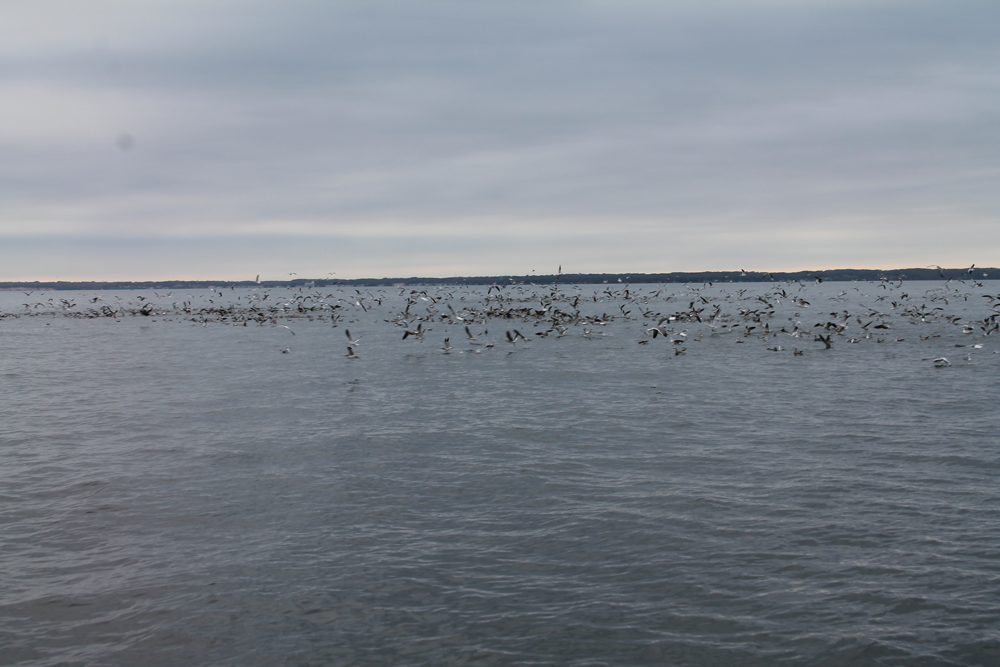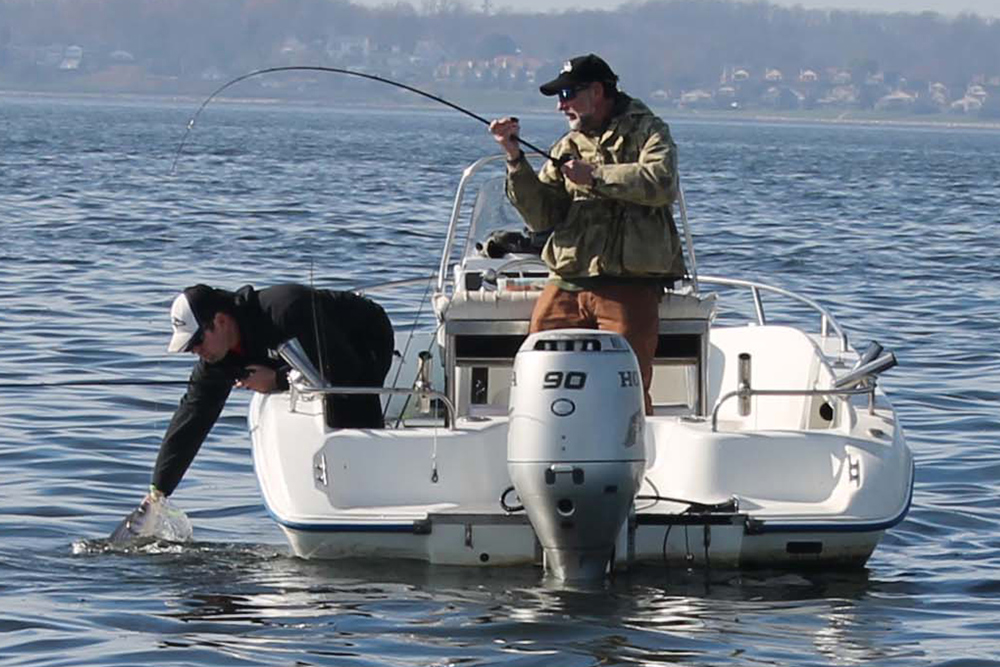Fishing under working birds is always fun, but it doesn't always result in a fish dinner. Flock after flock of birds are working on the horizon, yet you go home with an empty cooler? You’ve caught fish after fish after fish but each and every one was a half-inch short of the limit? After a day on nonstop action, you’ll be eating greasy fast-food instead of grilled rockfish? Bummer.

The chances are that you’ve had this experience more than once while fishing on the Chesapeake, where hordes of shorts often roil the water’s surface during the fall months. Don’t let it discourage you – there are almost always some box-size fish to be caught from these frenzies, if you just know how to target them in specific.
Depth Charge
The first item to bear in mind is that 90-percent of the time, fish consistently breaking in water less than 15’ deep are going to be little guys. We say “consistently” because when larger fish are schooled shallow, they usually pop up briefly as they chase peanut bunker and then quickly disappear again. Usually this takes place right at sunrise or sunset. Little guys which stay up top for extended periods of time through the day (and often week after week in the same general area), on the other hand, are usually smaller predators going after schools of smaller baitfish. You see birds working in shallow water, and want to check them out? Take one to two casts and if you catch a 10- or 12-inch fish, have a number of short strikes, or see very small splashes on the surface, start cruising again.
Now that you’ve eliminated half of the fish found under flocks of birds you’ll see out there, let’s eliminate another large portion: those in the top five feet of the water column. Yup, I can hear it already: “But I caught a dozen keepers right on the surface last year.” Okay, fine. But how many throw-backs did you have to cull to get that dozen? 100? 500? Maybe more? You want to catch bigger fish with more regularity? Then go deeper. Large stripers are lazy, and they’ll take a free meal over working for a living any day of the week. The largest fish of the frenzy will often be holding deep down below the bulk of the school, slurping up injured bait that sinks from the fray. In 40’ or 50’ of water, don’t be afraid to drop your offering all the way down to the bottom to reach those big boys. Up-sizing your leadheads or switching to jigging spoons with slender profiles, which sink quickly, are excellent choices for this task.
The exception to the rule: topwater plugs. There will be times when fishing topwater through the chaos of a feeding frenzy will, for whatever reason, attract the attention of the largest fish in the school. Note that you’ll still catch lots of shorts on topwater so you need to swap those trebles for single hooks or at least cut one of the tines off to reduce the damage done to throw-backs. But when going deep isn’t doing the trick, try the exact opposite approach and start walking the dog with the largest Badonk-A-Donk, Yo-Zuri 3D, or Spook in your tackle box.
Size Matters
Big fish want to eat a big meal, so give ‘em what they desire. This rule of thumb is usually most important to bear in mind during the spring season, but it has merit during a fall feeding frenzy, too. A six-inch jigging spoon, for example, looks awful darn big. But a 10-inch striper won’t hesitate to attack it. That makes feeding frenzies with a plethora of undersized fish an ideal time to try out that monster lure you have gathering dust in the back of the tackle box. Remember, for much of the fall there will be blues mixed in with the bass. Occasionally the blues will chomp into a small striper, as they chase the baitfish. Said striper may then fall, quivering, into the depths. So eight and nine inch baits are not too big to consider.

Another way to get bigger fish from the frenzy is to drop large live baits into it. This tactic is not a good idea when bluefish are present, as they’ll eat the tail right off of anything they can wrap their teeth around. If it’s all line-siders, however, and you have eight-inch spot in the livewell or can snag a big bunker, put a hook through the fish’s back and send ‘em right back down.
TIP: When big bunker are sighted on the surface, tie a large treble hook about a foot above a one-ounce sinker, cast it into the school, and rip it back to snag the fish. Then immediately send the fish back over the side on a live-lining rig.
Leave Fish to Find Fish
We’ve all heard the old rule, never leave fish to find fish. There’s a lot of truth to this saying, and I often try to live by it. However, when looking for large fish under breaking schools of little guys, I try to force myself to forget this saying. In fact, if you work a school for half an hour or so and don’t find any large fish, it’s probably time to move on. It’ll be tough, but you’ll have to bite the bullet and force yourself to move on and leave those fish. This is especially true when there are several pods of breakers in the general area. Whip out those binoculars – I know you have a good pair of image-stabilized binocs, which make spotting birds at a distance easy – and head off for another school. You never know, that one on the horizon might just hold your biggest fish of the season.
BONUS FISHING TIP: Whether you’re dropping jigs, tossing bait, or towing lines, it’s important to remember to stay around the periphery of a school of fish that’s breaking water. Drive through it, and you’ll likely send them down. But beyond that problem, you’ll also likely catch smaller fish by fishing right in the middle of the blitz. Remember, birds of a feather do flock together – large fish patrolling around a surface blitz have no great desire to mix it up with the little guys. As a result, not only do they hang deeper than the mass school of smaller fish, they also tend to be located around the edges of it. If you want to target those big fish, you’re best off thinking of the main school of small fish as structure. Like a big rockpile, the lunkers will be holding off to the sides of the base of the “item”.